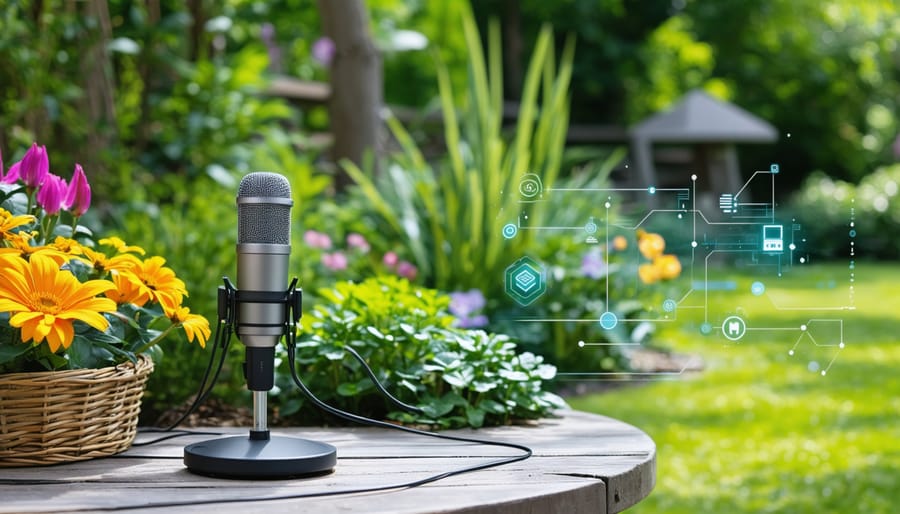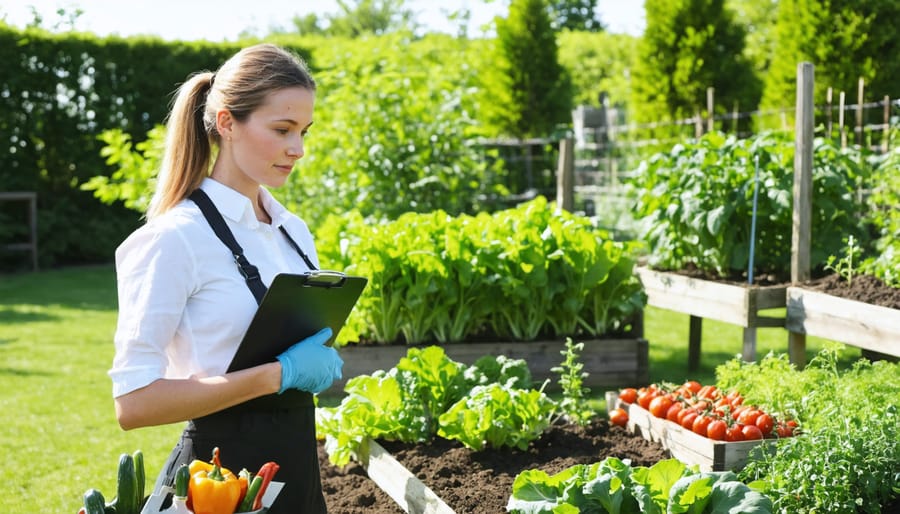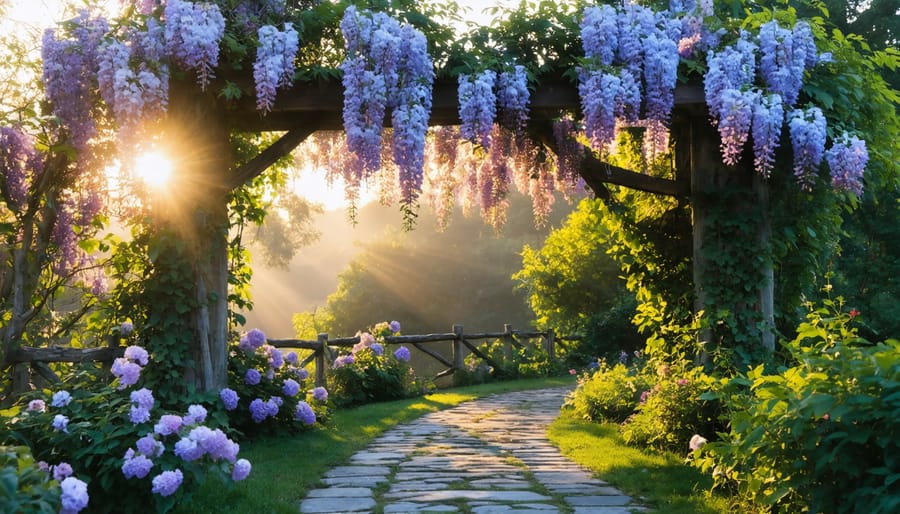Transform your gardening passion into compelling audio content with a well-crafted garden podcast that connects with fellow plant enthusiasts worldwide. From sharing seasonal growing tips to exploring sustainable practices, garden podcasting creates an intimate, engaging platform where your green thumb meets modern storytelling. Whether you’re an experienced horticulturist or a backyard hobbyist, launching a garden podcast opens new possibilities to cultivate community, share expertise, and inspire others to embrace the joys of gardening.
Today’s listeners crave authentic, practical gardening advice delivered in a conversational format, making podcasting the perfect medium for sharing your growing journey. With basic recording equipment, genuine enthusiasm, and a clear vision, you can create meaningful content that resonates with your audience while building a loyal following of garden enthusiasts.
This guide explores essential steps to produce a successful garden podcast, from selecting the right equipment and planning engaging episodes to developing your unique hosting style. Let’s dig into the fundamentals of garden podcast production and help you plant the seeds for your broadcasting success.
Essential Equipment for Garden Podcast Production
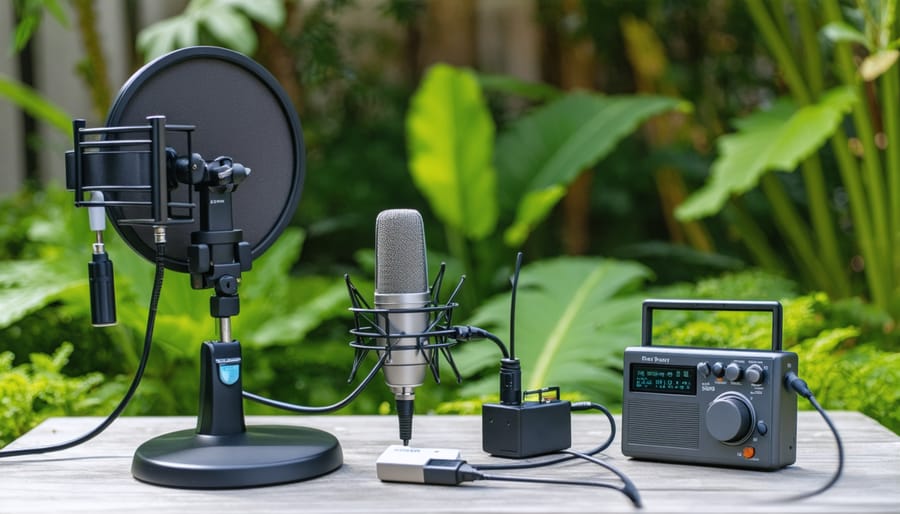
Recording in the Garden vs. Studio
Recording your garden podcast outdoors can add an authentic atmosphere that resonates with listeners, complete with chirping birds and rustling leaves. However, this natural ambiance comes with its own set of challenges. Wind noise can be particularly troublesome, so investing in a good windscreen for your microphone is essential. Morning recordings often work best, as there’s typically less wind and fewer neighborhood disturbances.
Studio recording, on the other hand, offers more control over your sound environment. You can eliminate unwanted background noise and maintain consistent audio quality throughout your episodes. A simple home studio setup in a quiet room with some basic acoustic treatment can work wonders. Even hanging blankets on the walls can help reduce echo.
Consider adopting a hybrid approach – record your introductions and detailed explanations in the studio, then venture into the garden for hands-on demonstrations and atmospheric segments. This combination gives listeners the best of both worlds: clear, professional-quality audio for important information, plus the authentic garden experience they crave.
Remember to test your equipment in both environments before committing to a full episode. Pay attention to your microphone’s positioning and sensitivity settings, as they may need adjustment when switching between indoor and outdoor recording. Some podcasters even keep a backup recording device handy for those spontaneous garden moments that are too good to miss.
Weather-Proofing Your Equipment
Recording your garden podcast outdoors adds wonderful ambient sounds and authenticity, but it also means protecting your equipment from the elements. Start by investing in a good-quality windscreen or deadcat for your microphone – this isn’t just for wind protection, it also helps shield against light moisture and debris. Keep a waterproof equipment bag nearby for quick storage if weather changes suddenly.
Consider setting up a small portable canopy or umbrella station for your recording spot. This creates shade for your equipment and protects against unexpected drizzle. Always place your recording equipment on a stable, elevated surface rather than directly on the ground where moisture can seep up.
Temperature fluctuations can affect your equipment’s performance, so avoid leaving gear in direct sunlight. Keep silica gel packets in your equipment case to combat humidity, and regularly clean your gear after outdoor sessions to prevent moisture buildup.
For backup protection, keep plastic bags and elastic bands handy – they make excellent emergency rain covers. If you’re recording in particularly damp conditions, consider using a boom pole to keep your microphone at a safe distance while still capturing those lovely garden sounds.
Remember to check the weather forecast before scheduling outdoor recording sessions, and always have an indoor backup location ready. With proper protection, you can create amazing garden content while keeping your equipment safe and functional.
Crafting Engaging Garden Podcast Content
Seasonal Episode Planning
Planning your garden podcast episodes around the natural rhythm of the seasons ensures your content remains relevant and timely for your listeners. Start by creating a yearly content calendar that aligns with your local growing season, considering both indoor and outdoor gardening activities.
Spring episodes can focus on seed starting, soil preparation, and early planting tips. This is also an ideal time to cover topics like composting basics and garden planning. As summer approaches, shift your content to plant care, pest management, and harvesting techniques. Include episodes about water conservation and heat-stress management during peak growing months.
Fall episodes naturally lend themselves to discussions about harvest preservation, garden cleanup, and preparing beds for winter. Winter programming can explore indoor gardening, seed catalog reviews, and garden planning for the upcoming season. This is also perfect for in-depth interviews with expert gardeners who have more time during the off-season.
Remember to factor in your listeners’ experience levels when planning seasonal content. Mix beginner-friendly episodes with more advanced topics throughout the year. Consider creating mini-series within seasons – like a “First-Time Vegetable Garden” series in spring or “Winter Garden Projects” in the colder months.
Stay flexible with your schedule to address unexpected weather events or trending gardening topics. Keep a few evergreen episodes ready for those weeks when seasonal content might not align perfectly with unusual weather patterns.
Interview Techniques for Garden Experts
Conducting engaging interviews for your garden podcast requires careful preparation and a genuine curiosity about your guest’s expertise. Start by thoroughly researching your guest’s background and contributions to the gardening community, which will help you craft thoughtful, relevant questions. As demonstrated in our recent interview series with garden experts, open-ended questions often yield the most interesting responses.
Begin with warm-up questions to help your guest feel comfortable, such as asking about their earliest gardening memories or what inspired their career choice. Follow up with specific questions about their area of expertise, whether it’s sustainable gardening practices, native plant cultivation, or innovative growing techniques.
Listen actively and allow natural conversation flows to develop. When your guest mentions something particularly interesting, don’t hesitate to dig deeper with follow-up questions. This spontaneity often leads to the most valuable insights for your listeners.
Remember to keep your questions concise and clear, avoiding complex technical terms that might confuse both your guest and audience. Encourage your guest to share practical tips and real-world examples that listeners can apply in their own gardens.
End each interview by asking about upcoming projects or seasonal advice, giving your audience something to look forward to and implement immediately.
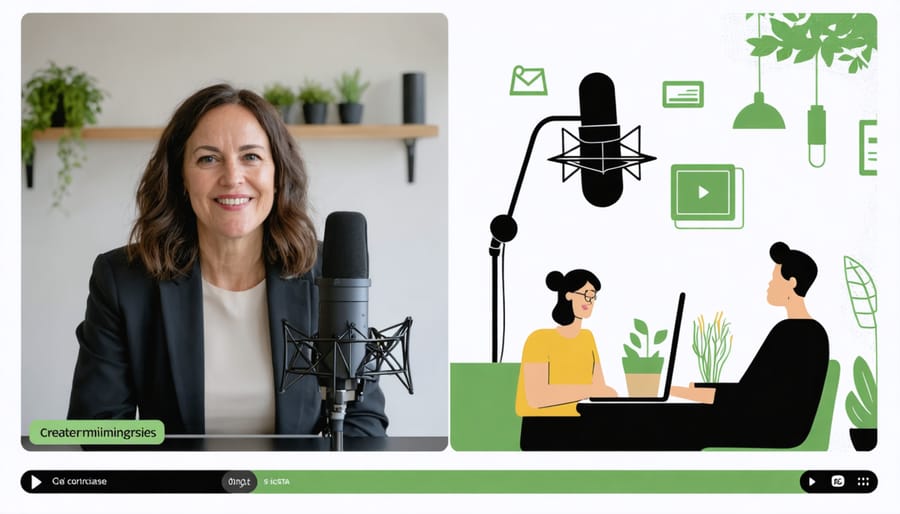
Interactive Listener Elements
Creating a vibrant connection with your listeners is essential for any successful garden podcast. One of the most effective ways to engage your audience is through interactive Q&A segments. Set aside time in each episode to address listener questions about common gardening challenges, seasonal issues, or specific plant varieties. This not only provides valuable content but helps build an engaged gardening community around your podcast.
Consider implementing regular “listener success story” features where you share experiences from your audience’s garden victories. These personal stories, combined with expert analysis through conversations with top horticulturists, create a rich, collaborative learning environment.
Social media integration is another powerful tool for listener engagement. Create dedicated hashtags for your podcast and encourage listeners to share photos of their gardens or current projects. You can discuss these submissions in future episodes, creating a feedback loop that keeps your audience invested and participating.
Don’t forget to incorporate seasonal call-in episodes where listeners can get real-time answers to their gardening dilemmas. These special episodes often generate the most engagement and provide excellent content for future reference. Consider using polls and surveys to guide your content planning, ensuring your episodes address the topics your audience cares about most.
Post-Production Excellence
Cleaning Outdoor Audio
Creating a clean outdoor recording can be challenging, but with a few simple techniques, you can minimize unwanted noise and capture the true essence of your garden. Start by using a windscreen or deadcat cover for your microphone – these fuzzy covers are excellent at reducing wind interference while still allowing clear voice recording.
Position yourself strategically in your garden by finding natural sound barriers like walls or hedges that can block prevailing winds. If possible, record during calmer parts of the day, typically early morning or evening when wind tends to be lighter and birds are less active (unless you want their cheerful songs in your podcast).
For unavoidable background sounds, try using a cardioid microphone pattern, which focuses on sound from directly in front while reducing noise from other directions. Keep your microphone close to your mouth, about 6-8 inches away, to maintain a strong voice presence against ambient garden sounds.
During post-production, use a noise reduction tool to clean up any remaining unwanted sounds. Most audio editing software includes built-in noise reduction features – just capture a few seconds of your garden’s ambient sound before recording, and use this as a reference for the software to remove similar frequencies from your recording.
Remember that some garden sounds can enhance your podcast’s authenticity – the gentle rustling of leaves or distant bird calls can create a lovely atmosphere when balanced correctly with your voice.
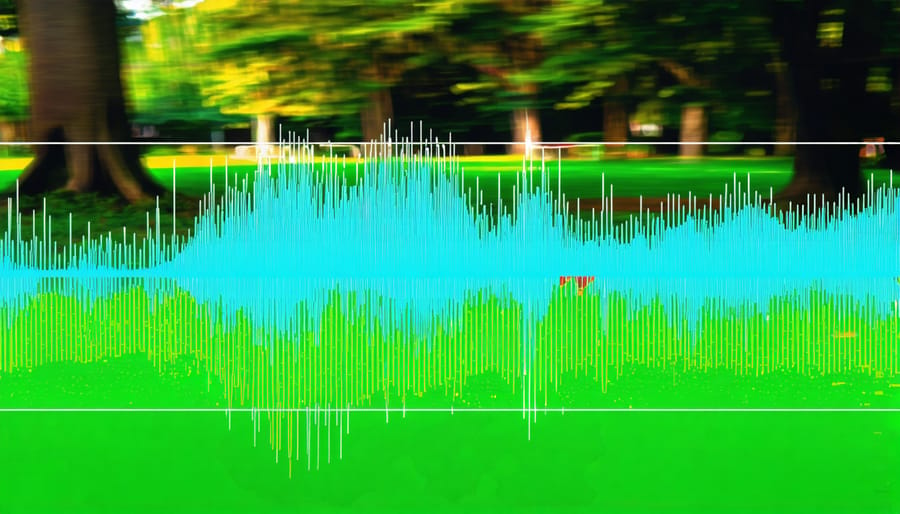
Adding Nature Soundscapes
The natural sounds of a garden can transform your podcast from a simple recording into an immersive experience for your listeners. Start by capturing the gentle rustling of leaves, the chirping of garden birds, and the soothing sounds of flowing water from fountains or streams. These ambient sounds work best when recorded during calm weather conditions, ideally early morning or late evening when there’s less background noise.
When recording nature sounds, use a windscreen on your microphone to minimize unwanted wind interference. Position yourself strategically to capture specific sounds – get close to water features or place your microphone near flowering plants where bees and other pollinators are active. Remember to record longer clips than you think you’ll need, as natural sounds can be unpredictable.
During editing, layer these sounds subtly beneath your main narrative. The key is to enhance the listening experience without overwhelming your voice. Use a lower volume for background nature sounds, typically 10-20% of your voice volume. These soundscapes work particularly well during segment transitions or when describing specific garden areas.
Consider creating a library of garden sounds across different seasons. Spring birds, summer insects, autumn leaves, and winter wind each bring unique elements to your podcast. This variety helps create a more dynamic and engaging listening experience while reinforcing the seasonal nature of gardening.
Show Notes and Resources
Create a comprehensive resource section for your listeners by including detailed show notes for each episode. List key topics discussed, gardening tips shared, and any specific plant varieties or techniques mentioned. Include timestamps for important segments, making it easy for listeners to revisit specific information.
Link to relevant resources such as recommended gardening tools, books, or websites mentioned during the episode. When featuring guest experts, include their social media handles and websites so listeners can share your content effectively and connect with them further.
Consider creating downloadable companion guides, such as seasonal planting calendars, pest identification charts, or detailed project instructions. These valuable extras help listeners implement what they’ve learned and keep them engaged between episodes.
Remember to include high-quality photos of plants, garden layouts, or projects discussed in the episode. Visual references enhance understanding and make your show notes more engaging. Add a section for listener questions and feedback, encouraging community participation and topic suggestions for future episodes.
Maintain a consistent format for your show notes, making them easy to navigate and reference. Include a brief episode summary, bullet points of key takeaways, and any relevant zone-specific growing information to help gardeners in different regions apply your advice effectively.
Starting a garden podcast is an exciting journey that allows you to share your passion for gardening while building a vibrant community of like-minded enthusiasts. As we’ve explored throughout this guide, you don’t need expensive equipment or professional broadcasting experience to create engaging content – just a genuine love for gardening and a willingness to share your knowledge.
Remember that your unique perspective and experiences are valuable, whether you’re discussing sustainable practices, interviewing local gardening experts, or sharing seasonal growing tips. Start small with basic equipment and focus on delivering quality content that resonates with your target audience. As your podcast grows, you can gradually upgrade your setup and expand your topics.
Don’t be afraid to experiment with different formats and themes until you find what works best for you and your listeners. The gardening community is wonderfully supportive, and there’s always room for fresh voices and perspectives. Whether you’re sharing container gardening tips for urban dwellers or exploring advanced permaculture techniques, your podcast can become a valuable resource for fellow gardeners.
Take that first step today – set up your basic recording space, outline your first few episodes, and start sharing your gardening journey with the world. Your future listeners are out there, eager to learn from your experiences and grow alongside you in their gardening adventures.

